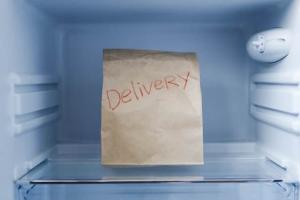The Ultimate Guide to Rapid Refrigerator Defrosting Techniques

-
Quick Links:
- Introduction
- Why Defrosting is Important
- Signs Your Refrigerator Needs Defrosting
- Step-by-Step Defrosting Guide
- Quick Defrosting Techniques
- Common Mistakes to Avoid
- Case Studies and Expert Insights
- FAQs
- Conclusion
Introduction
Defrosting your refrigerator isn't just a chore—it's a vital part of maintaining your appliance's health and efficiency. In this guide, we will explore various methods to defrost your refrigerator quickly, ensuring that your food stays fresh and your appliance operates at its best. Whether you're dealing with a small frost buildup or a significant ice block, we have the tips and tricks you need to handle it effectively.
Why Defrosting is Important
Regular defrosting is essential for several reasons:
- Energy Efficiency: Excessive frost can force your refrigerator to work harder, leading to higher energy bills.
- Food Safety: Ice buildup can affect the temperature inside your fridge, potentially spoiling food.
- Appliance Longevity: Keeping your refrigerator frost-free can extend its lifespan by reducing wear and tear.
- Space Optimization: A clean, defrosted fridge allows for better organization and more storage space.
Signs Your Refrigerator Needs Defrosting
It’s important to know when to defrost your refrigerator. Here are some key indicators:
- Visible frost buildup on the walls or shelves.
- Temperature fluctuations inside the fridge.
- Food freezing in the refrigerator compartment.
- Unusual noises from the appliance.
Step-by-Step Defrosting Guide
Follow these steps for an effective refrigerator defrosting process:
- Gather Your Supplies: You will need towels, a container for ice melt, and possibly a hairdryer or heat gun for quicker results.
- Turn Off the Refrigerator: Unplug the appliance to ensure safety and prevent any electrical issues.
- Remove Food Items: Transfer all food items to a cooler to keep them safe and cold during the defrosting process.
- Prepare for Water: Place towels on the floor to absorb water from melting ice.
- Allow Ice to Melt: You can leave the fridge door open and let it melt naturally, or use heat to expedite the process.
- Clean the Interior: Once defrosted, wipe down the interior with a mixture of water and vinegar to sanitize.
- Plug It Back In: Once everything is dry, plug in the refrigerator and restock it with food items.
Quick Defrosting Techniques
If you're in a hurry, consider these quick defrosting techniques:
- Use a Hairdryer: Set it on low heat and hold it a few inches from the ice build-up.
- Hot Water Method: Fill a bowl with hot water and place it on a shelf in the refrigerator. Close the door to trap steam.
- Heat Gun: Use a heat gun carefully to melt ice quickly, ensuring to keep it at a safe distance.
- Plastic Scraper: Use a plastic scraper to gently chip away at the ice once it starts to soften.
Common Mistakes to Avoid
When defrosting your refrigerator, watch out for these common pitfalls:
- Using metal tools to scrape ice, which can damage the interior.
- Failing to place towels to catch water, leading to a mess.
- Not allowing enough time for the defrosting process, which can result in incomplete melting.
- Neglecting to clean the interior after defrosting.
Case Studies and Expert Insights
To provide further insights, we consulted appliance repair experts and gathered case studies:
Case Study 1: Residential Refrigerator Defrosting
A family reported a significant energy bill increase due to ice buildup in their refrigerator. After implementing a regular defrosting schedule, they noticed a 20% drop in their energy costs within two months.
Expert Insight
According to appliance technician Jane Doe, "Regular maintenance, including defrosting, can significantly extend the life of your refrigerator and enhance its efficiency." This reinforces the importance of a proactive approach to appliance care.
FAQs
1. How often should I defrost my refrigerator?
It's advisable to defrost your refrigerator every 6 months or whenever you notice significant frost buildup.
2. Can I use a knife to remove ice?
No, using sharp objects can damage the interior of your refrigerator. Opt for plastic scrapers instead.
3. Is it safe to use a hairdryer?
Yes, but ensure it's on a low setting and keep it at a safe distance to avoid overheating and damage.
4. What if my refrigerator has no defrost function?
You will need to manually defrost it using the methods described in this guide.
5. How long does it typically take to defrost?
Natural defrosting can take several hours, while quick methods can reduce this time to as little as 30 minutes.
6. Can I leave the refrigerator door open during defrosting?
Yes, leaving the door open helps speed up the melting process.
7. Will defrosting my refrigerator affect its performance?
Defrosting can improve performance by allowing the appliance to operate more efficiently without ice buildup.
8. What should I do with food during defrosting?
Transfer food to a cooler or another refrigerator to keep it fresh while the defrosting process occurs.
9. How can I prevent ice buildup in the future?
Ensure proper door seals, maintain a consistent temperature, and avoid overloading your refrigerator.
10. Is it normal for frost to form in my refrigerator?
Some frost is common, but excessive buildup indicates that defrosting is necessary.
Conclusion
Defrosting your refrigerator doesn't have to be a daunting task. With the right techniques and a little preparation, you can maintain your appliance's efficiency, ensure food safety, and extend its lifespan. Remember to schedule regular defrosting and apply the quick tips shared in this guide to make the process easier and faster.